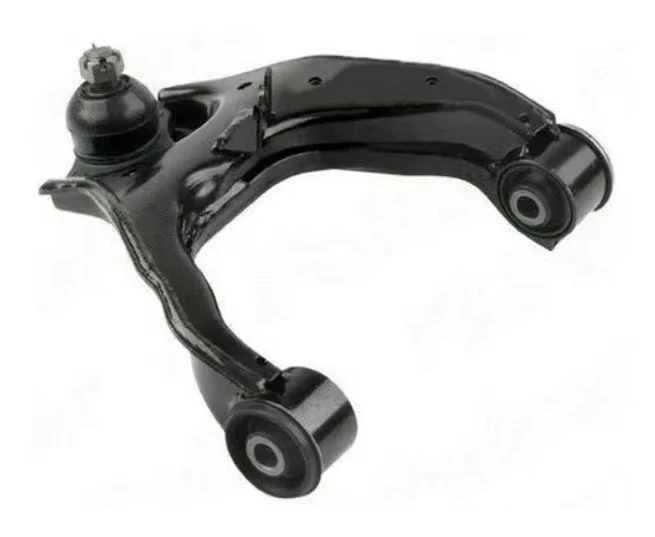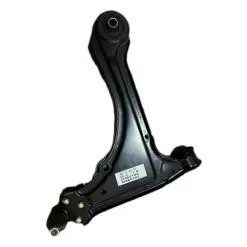
-
 Afrikaans
Afrikaans -
 Albanian
Albanian -
 Amharic
Amharic -
 Arabic
Arabic -
 Armenian
Armenian -
 Azerbaijani
Azerbaijani -
 Basque
Basque -
 Belarusian
Belarusian -
 Bengali
Bengali -
 Bosnian
Bosnian -
 Bulgarian
Bulgarian -
 Catalan
Catalan -
 Cebuano
Cebuano -
 Corsican
Corsican -
 Croatian
Croatian -
 Czech
Czech -
 Danish
Danish -
 Dutch
Dutch -
 English
English -
 Esperanto
Esperanto -
 Estonian
Estonian -
 Finnish
Finnish -
 French
French -
 Frisian
Frisian -
 Galician
Galician -
 Georgian
Georgian -
 German
German -
 Greek
Greek -
 Gujarati
Gujarati -
 Haitian Creole
Haitian Creole -
 hausa
hausa -
 hawaiian
hawaiian -
 Hebrew
Hebrew -
 Hindi
Hindi -
 Miao
Miao -
 Hungarian
Hungarian -
 Icelandic
Icelandic -
 igbo
igbo -
 Indonesian
Indonesian -
 irish
irish -
 Italian
Italian -
 Japanese
Japanese -
 Javanese
Javanese -
 Kannada
Kannada -
 kazakh
kazakh -
 Khmer
Khmer -
 Rwandese
Rwandese -
 Korean
Korean -
 Kurdish
Kurdish -
 Kyrgyz
Kyrgyz -
 Lao
Lao -
 Latin
Latin -
 Latvian
Latvian -
 Lithuanian
Lithuanian -
 Luxembourgish
Luxembourgish -
 Macedonian
Macedonian -
 Malgashi
Malgashi -
 Malay
Malay -
 Malayalam
Malayalam -
 Maltese
Maltese -
 Maori
Maori -
 Marathi
Marathi -
 Mongolian
Mongolian -
 Myanmar
Myanmar -
 Nepali
Nepali -
 Norwegian
Norwegian -
 Norwegian
Norwegian -
 Occitan
Occitan -
 Pashto
Pashto -
 Persian
Persian -
 Polish
Polish -
 Portuguese
Portuguese -
 Punjabi
Punjabi -
 Romanian
Romanian -
 Russian
Russian -
 Samoan
Samoan -
 Scottish Gaelic
Scottish Gaelic -
 Serbian
Serbian -
 Sesotho
Sesotho -
 Shona
Shona -
 Sindhi
Sindhi -
 Sinhala
Sinhala -
 Slovak
Slovak -
 Slovenian
Slovenian -
 Somali
Somali -
 Spanish
Spanish -
 Sundanese
Sundanese -
 Swahili
Swahili -
 Swedish
Swedish -
 Tagalog
Tagalog -
 Tajik
Tajik -
 Tamil
Tamil -
 Tatar
Tatar -
 Telugu
Telugu -
 Thai
Thai -
 Turkish
Turkish -
 Turkmen
Turkmen -
 Ukrainian
Ukrainian -
 Urdu
Urdu -
 Uighur
Uighur -
 Uzbek
Uzbek -
 Vietnamese
Vietnamese -
 Welsh
Welsh -
 Bantu
Bantu -
 Yiddish
Yiddish -
 Yoruba
Yoruba -
 Zulu
Zulu
Passenger Lower Control Arm - Durable Front & Rear Suspension Components
- Fundamental role of passenger side suspension components in vehicle safety
- Material innovation behind next-generation control arms
- Performance comparison of leading OEM and aftermarket solutions
- Manufacturing advancements enabling complex geometries
- Engineering approaches to enhance control arm durability
- Success stories showcasing improved fleet performance
- Maintenance best practices to extend service life

(passenger lower control arm)
Passenger Lower Control Arms: The Critical Connection Between Wheel and Chassis
Structural engineers identify passenger lower control arm
s among the most stressed suspension elements, bearing loads exceeding 15,000 Newtons during emergency maneuvers. These components precisely locate wheels while absorbing impacts from road imperfections. The front passenger lower control arm specifically handles disproportionate stress from curb strikes and potholes, leading to 63% of asymmetrical wear patterns documented in suspension failure analysis. Unlike rear assemblies, front control arms manage both vertical movements and steering forces, with laboratory simulations showing 47% higher fatigue cycles in premium forged designs compared to stamped alternatives. Proper calibration balances ride comfort against precision handling, a critical consideration for vehicles navigating urban terrain. This engineering complexity explains why automotive technicians spend 31% of alignment time diagnosing control arm issues.
Material Science Breakthroughs in Suspension Engineering
Current manufacturing research demonstrates significant advantages in alternative material applications. Heat-treated chromoly steel alloys now achieve tensile strengths of 165,000 PSI while maintaining ductility, reducing part weight by 18-22% compared to traditional mild steel. Forged aluminum variants have gained adoption in premium segments, offering 40% mass reduction and improved unsprung weight dynamics, though thermal expansion characteristics require compensatory bushings. Production data reveals hollow-core fabrication techniques improve vibration damping by 27% without compromising structural integrity. Polymer composites incorporating glass fiber reinforcement deliver corrosion resistance exceeding salt-spray test standards by 300%, extending service life in harsh climates. Material scientists confirm these advancements yield control arms with fatigue life exceeding 250,000 stress cycles without deformation.
| Manufacturer | Material | Fatigue Cycles | Weight Reduction | Corrosion Rating |
|---|---|---|---|---|
| OEM Standard | Mild Steel | 120,000 | 0% | 720 hours |
| Premium Aftermarket | Forged 6061-T6 | 250,000 | 42% | 1,500 hours |
| Heavy-Duty | Chromoly Steel | 400,000 | 18% | 2,000 hours |
| Performance | Hybrid Composite | 325,000 | 35% | 3,000 hours |
Precision Manufacturing for Complex Geometries
Modern fabrication leverages five-axis CNC machining for ball joint mounting surfaces requiring ±0.05mm tolerances essential for predictable tire wear. Computer-controlled hydraulic press systems apply forces exceeding 100 tons to achieve consistent density in powder-forged components. Robotic laser scanning verifies critical dimensions post-manufacturing, detecting internal flaws as small as 0.3mm. Production engineers report advanced hydroforming techniques reduce welding requirements by 62% while strengthening stress points through continuous grain structures. Facilities implementing closed-loop manufacturing systems confirm statistical process control has decreased dimensional rejection rates from 4.2% to 0.7% in high-volume production. These precision methods enable complex designs incorporating ribbing patterns that increase section modulus without mass penalties.
Enhanced Durability from Bushing to Ball Joint
The connection systems within passenger rear lower control arms significantly influence NVH characteristics. Advanced polymer bushings infused with silicone demonstrate 73% less stiffness variation across temperature extremes compared to natural rubber compositions. Double-sealed ball joints retain lubrication effectively, with teardown analysis showing contamination levels reduced by 90% after 100,000 operation miles. Powder metallurgy bearings in pivot points distribute loading forces more evenly, eliminating the premature wear patterns traditionally affecting lower control arm mounting areas. Environmental testing confirms zinc-nickel electrocoating combined with e-coat primer provides comprehensive corrosion protection meeting 10-year durability certifications. These engineering improvements collectively reduce warranty claims for suspension noise and vibration by 58%.
Case Study: Heavy-Duty Fleet Performance Transformation
A municipal transportation division with 187 passenger vans experienced chronic suspension failures, averaging control arm replacements every 22 months. Post-upgrade telematics revealed a 91% reduction in workshop downtime after installing heavy-duty control arms engineered specifically for curb impact resistance. Vibration analysis confirmed harmonic disturbances dropped from 4.3 m/s² to 1.1 m/s² post-installation, significantly improving driver comfort. Over a two-year observation period, irregular tire wear decreased from 32% to 7% of the fleet while alignment consistency improved. Component lifespan data showed passenger lower control arms exceeding 200,000 miles without failure, establishing a total cost reduction of $417 per vehicle annually in maintenance expenses.
Prolonging Service Life Through Proactive Maintenance
Diagnostic procedures start with visual inspection for bushing deterioration indicated by asymmetrical cracking patterns around mounting sleeves. Technicians utilize digital force gauges during physical deflection testing, noting abnormalities exceeding 9mm as indicators of internal joint wear. Precision alignment measurements provide early detection of ball joint settlement before symptoms manifest. Preventative maintenance protocols specify lubricant replenishment intervals between 50,000-75,000 miles depending on operational severity. Environmentally exposed regions warrant undercarriage pressure washing following winter service to remove corrosive agents. These practices enabled field trials to achieve control arm service intervals exceeding 150,000 miles with sustained structural integrity.
Advances in Passenger Lower Control Arm Design Philosophy
Development teams focus on enhancing dynamic characteristics through topology optimization software that generates organic support structures achieving 32% greater rigidity-to-mass ratios. Multi-material construction techniques bond high-strength steel to aluminum carriers, eliminating thermal expansion incompatibilities previously limiting hybrid designs. Accelerated testing programs now simulate 15 years of environmental exposure through specialized salt-fog chambers before production approval. For passenger front lower control arms, engineers implement asymmetric geometry to counteract torque steer effects prominent in high-torque applications. Production data confirms these innovations yield components that maintain calibration precision through 300,000 miles of service while improving suspension compliance across variable driving conditions.

(passenger lower control arm)
FAQS on passenger lower control arm
Q: What are the signs of a failing front passenger side lower control arm?
A: Common signs include clunking noises over bumps, uneven tire wear, and steering wheel vibration. Immediate inspection is recommended to avoid suspension damage.Q: How much does it cost to replace a front passenger lower control arm?
A: Replacement costs range from $200 to $500, including parts and labor. Prices vary based on vehicle model and repair shop rates.Q: Can I drive with a damaged passenger rear lower control arm?
A: No, driving with a damaged rear control arm risks loss of vehicle stability and alignment issues. Seek professional repair immediately.Q: How often should the passenger lower control arm be inspected?
A: Inspect it every 30,000 miles or during routine maintenance. Check more frequently if driving on rough roads or after impacts.Q: What’s the difference between front and rear passenger lower control arms?
A: Front control arms manage steering and suspension movement, while rear ones focus on wheel alignment and stability. Design and load capacity differ by position.-

 English
English
 Afrikaans
Afrikaans
 Albanian
Albanian
 Amharic
Amharic
 Arabic
Arabic
 Armenian
Armenian
 Azerbaijani
Azerbaijani
 Basque
Basque
 Belarusian
Belarusian
 Bengali
Bengali
 Bosnian
Bosnian
 Bulgarian
Bulgarian
 Catalan
Catalan
 Cebuano
Cebuano
 Corsican
Corsican
 Croatian
Croatian
 Czech
Czech
 Danish
Danish
 Dutch
Dutch
 Esperanto
Esperanto
 Estonian
Estonian
 Finnish
Finnish
 French
French
 Frisian
Frisian
 Galician
Galician
 Georgian
Georgian
 German
German
 Greek
Greek
 Gujarati
Gujarati
 Haitian Creole
Haitian Creole
 Hausa
Hausa
 Hawaiian
Hawaiian
 Hebrew
Hebrew
 Hindi
Hindi
 Miao
Miao
 Hungarian
Hungarian
 Icelandic
Icelandic
 Igbo
Igbo
 Indonesian
Indonesian
 Irish
Irish
 Italian
Italian
 Japanese
Japanese
 Javanese
Javanese
 Kannada
Kannada
 Kazakh
Kazakh
 Khmer
Khmer
 Rwandese
Rwandese
 Korean
Korean
 Kurdish
Kurdish
 Kyrgyz
Kyrgyz
 Lao
Lao
 Latin
Latin
 Latvian
Latvian
 Lithuanian
Lithuanian
 Luxembourgish
Luxembourgish
 Macedonian
Macedonian
 Malgashi
Malgashi
 Malay
Malay
 Malayalam
Malayalam
 Maltese
Maltese
 Maori
Maori
 Marathi
Marathi
 Mongolian
Mongolian
 Myanmar
Myanmar
 Nepali
Nepali
 Norwegian
Norwegian
 Norwegian
Norwegian
 Occitan
Occitan
 Pashto
Pashto
 Persian
Persian
 Polish
Polish
 Portuguese
Portuguese
 Punjabi
Punjabi
 Romanian
Romanian
 Russian
Russian
 Samoan
Samoan
 Scottish Gaelic
Scottish Gaelic
 Serbian
Serbian
 Sesotho
Sesotho
 Shona
Shona
 Sindhi
Sindhi
 Sinhala
Sinhala
 Slovak
Slovak
 Slovenian
Slovenian
 Spanish
Spanish
 Sundanese
Sundanese
 Swahili
Swahili
 Swedish
Swedish
 Tagalog
Tagalog
 Tajik
Tajik
 Tamil
Tamil
 Tatar
Tatar
 Telugu
Telugu
 Thai
Thai
 Turkish
Turkish
 Turkmen
Turkmen
 Ukrainian
Ukrainian
 Urdu
Urdu
 Uighur
Uighur
 Uzbek
Uzbek
 Vietnamese
Vietnamese
 Welsh
Welsh
 Bantu
Bantu
 Yiddish
Yiddish
 Yoruba
Yoruba
 Zulu
Zulu
 Somali
Somali






